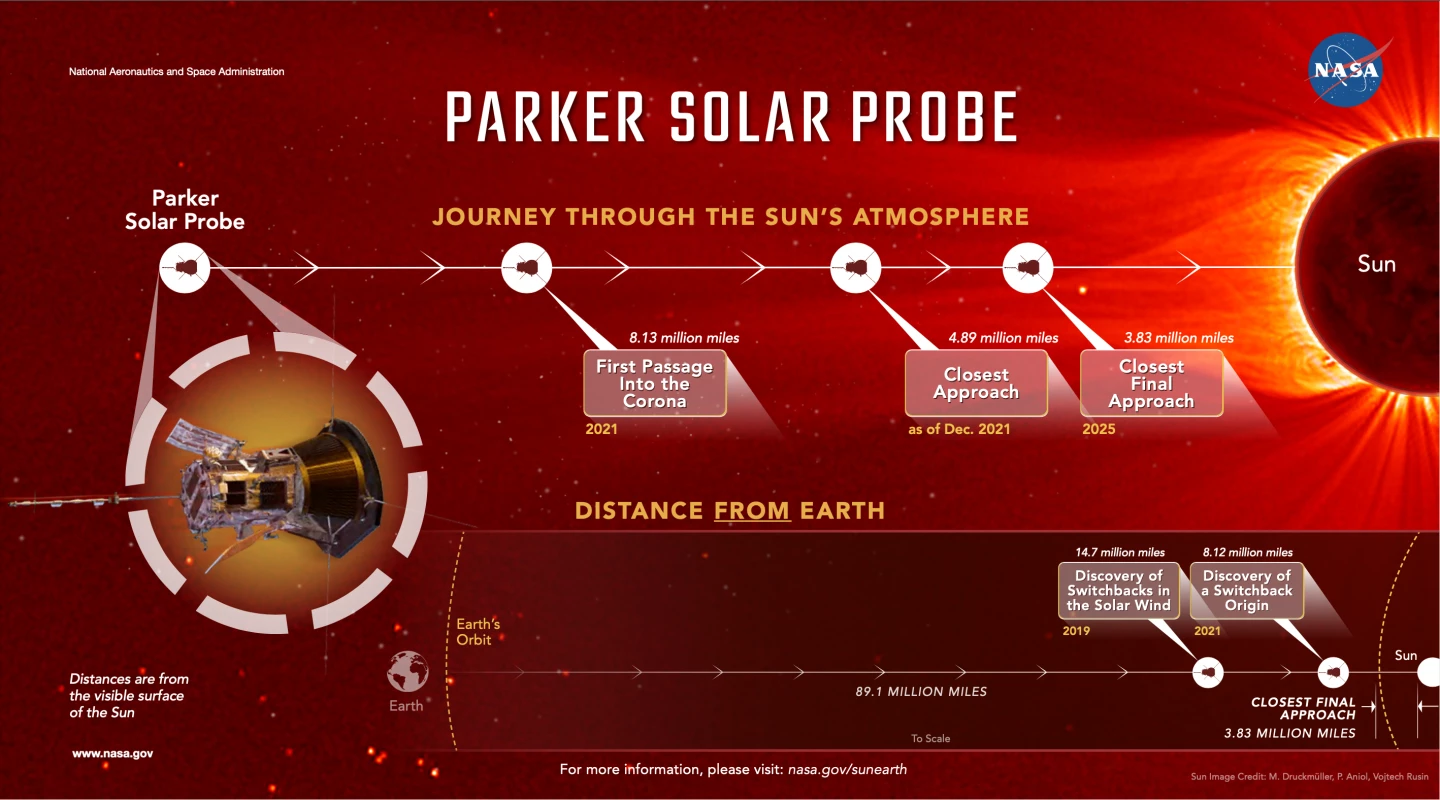After setting off back in 2018 on a history-making mission to study the Sun by getting up close and personal with its atmosphere, NASA's Solar Parker Probe has entered this region for the first time. The craft's passage through the Sun's upper atmosphere, known as the corona, has enabled unprecedented sampling of its particles and magnetic fields, opening up a new chapter in the field of solar science and our understanding of how the solar system was formed.
The Parker Solar Probe was launched in August of 2018 with the goal of "touching the Sun," with its primary focus being the study of solar winds. These are streams of sub-atomic particles that are formed in its atmosphere and blasted outward, carrying the magnetic field of the Sun along for the ride to influence our planet and others throughout the solar system.
By studying these solar winds, which have intrigued scientists for decades, the hope is we can learn more about how energy and heat travel through the Sun's atmosphere. Here the winds accelerate from subsonic to supersonic speeds, and a better understanding of this process can reveal clues around how life on Earth developed, and how other stars around the universe came to be.
Throughout its journey toward the Sun, the Parker Solar Probe set a series of records to become the fastest object ever made, reaching speeds of 363,660 mph (586,864 km/h). This took place during the spacecraft's flyby of the Sun last month, the 10th of 24 increasingly closer orbits it will make across its seven-year mission that will eventually bring it to within 3.83 million miles (6.1 million km) of the surface.
Data from the eighth of these flybys back in April, around 8.1 million miles (13 million km) above the solar surface, revealed conditions indicating that the probe had crossed into the solar atmosphere for the first time. This point, where the atmosphere ends and the solar winds begin, is known as the Alfvén critical surface, and until now scientists weren't sure exactly where it lay, though remote imaging had suggested it was situated somewhere between 4.3 and 8.6 million miles (6.9 and 13.8 million km) above the surface.
“Flying so close to the Sun, Parker Solar Probe now senses conditions in the magnetically dominated layer of the solar atmosphere – the corona – that we never could before,” says Nour Raouafi, the Parker project scientist at the Johns Hopkins Applied Physics Laboratory in Laurel, Maryland. “We see evidence of being in the corona in magnetic field data, solar wind data, and visually in images. We can actually see the spacecraft flying through coronal structures that can be observed during a total solar eclipse.”
The data also revealed that the Alfvén critical surface is characterized by wrinkle-like spikes and valleys, as some scientists had predicted. The hope is that understanding how these spikes and valleys align with solar activity coming from the surface can improve our understanding of how it affects the atmosphere and solar winds.

As the probe moved in and out of the corona, it also encountered features known as pseudostreamers, which are massive structures that can actually be seen on Earth during solar eclipses. Being inside the pseudostreamers is described by mission scientists as like being inside the eye of the storm, with quieter conditions and slower streams of particles shaped by magnetic fields.
Other significant findings from the probe's close encounter concern zig-zag-shaped structures in the solar winds called switchbacks, which 2019 data from the mission revealed to be plentiful close to the Sun. What remained unknown was where they formed, but the latest intel from the Parker Solar Probe shows one point of origin, near the visible surface of the Sun, known as the photosphere.
The scientists have found that switchbacks occur in patches and appear to align with magnetic funnels that emerge from the photosphere. They believe these magnetic funnels may be one of the places where solar wind originates, particularly the faster moving forms of it.
“The structure of the regions with switchbacks matches up with a small magnetic funnel structure at the base of the corona,” says Stuart Bale, professor at the University of California, Berkeley, and lead author on the new switchbacks paper. “This is what we expect from some theories, and this pinpoints a source for the solar wind itself.”

As the probe continues to carry out closer flybys of the Sun, scientists expect to learn more about these types of solar phenomena. This could include how the switchbacks are actually formed, understanding how the corona is heated to millions of degrees, and why it is hotter than the actual solar surface below it.
"Parker Solar Probe 'touching the Sun' is a monumental moment for solar science and a truly remarkable feat," says Thomas Zurbuchen, the associate administrator for the Science Mission Directorate at NASA Headquarters in Washington. "Not only does this milestone provide us with deeper insights into our Sun's evolution and its impacts on our solar system, but everything we learn about our own star also teaches us more about stars in the rest of the universe.”
Research detailing the milestone was published in the journal Physical Review Letters, while the video below provides an overview of the mission so far.
Source: NASA





